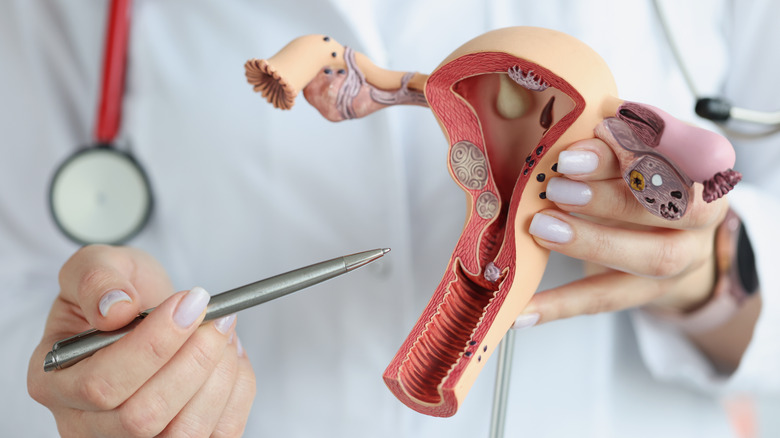What To Expect During A D&C
If you have recently had a doctor tell you that you may need to undergo a D&C, you are likely a bit worried. D&C is short for Dilatation and Curettage and is a procedure done to scrape the uterine lining in order to remove tissue that either doesn't belong or needs testing. There are a few different reasons someone may have to undergo a D&C. If you are experiencing bleeding not caused by menstruation or any bleeding deemed "abnormal," your doctor may have you undergo the surgical procedure to test the uterine lining and better understand what is going on. If there is a suspicion of cancer, a D&C may also be performed to test for tumors or polyps in the uterus.
More commonly, though, many women must undergo a D&C due to a miscarriage or fertility issues. This type of D&C is referred to as a "suction D&C" and is the process of taking out the fetus and the tissues that are not able to pass through the body following a miscarriage. Some women also have a D&C after childbirth if the placenta does not fully leave the body due to the increased risk of infection. If you are scheduled for a D&C, here's what you can expect from the procedure.
What happens during a D&C
Whether your doctor has prescribed a D&C to better understand and diagnose issues you are having or to solve an issue you are having, the procedure looks quite similar. A D&C is a surgical procedure and it can be quite painful. Because of this, most of these will be done under anesthesia, either general anesthesia or a spinal tap, which is when you are fully asleep. During the procedure, your heels will rest in stirrups in a position very similar to a pap smear or annual gynecologist visit. Your doctor will insert a series of thin rods into the cervix, each slightly wider than the previous one, to dilate your cervix until it opens enough for the suction tool to pass through to the uterus where it removes the non-viable fetus or uterine tissue which may be sent to a lab for testing, per the American College of Obstetricians and Gynecologists.
While this doesn't sound pleasant, due to the anesthesia, most women who undergo a D&C will not feel any physical discomfort while it is being done. But the procedure itself is just one aspect of a D&C.
What to expect after a D&C is performed
While a D&C is one of the common procedures performed in the U.S., according to The National Library of Medicine, it is still something some women have never heard of or experienced in their lifetime. When the procedure is finished, you will likely wait at the hospital in recovery for a short time to ensure you do not bleed excessively or have any complications. From there, someone will need to drive you home. Cramping and light bleeding are normal for a few days, and you'll be instructed to rest for a day or two and avoid putting anything into your vagina until cleared by your doctor.
And while the physical effects following a D&C are not too much of a concern, it's the mental aspect that many women should be prepared for. If you are getting a D&C due to a miscarriage, it's important to understand that you are not alone. Worldwide, an estimated 23 million women a year experience a miscarriage and many of those women must undergo a D&C. If your D&C is done to diagnose a health issue, speak with your doctor about the potential outcomes and be prepared by bringing a family member with you to hear your results. Regardless of the reason for your D&C, it is nothing to be ashamed of and is a very safe procedure that's performed to prevent serious and potentially deadly infections.


